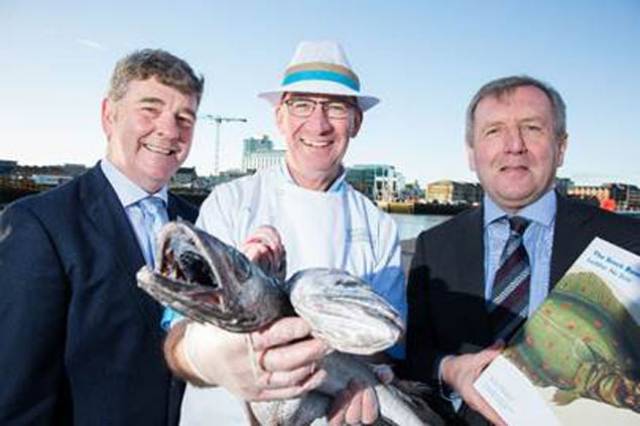The Minister for Agriculture, Food and the Marine, Michael Creed, T.D., has received the 2018 Marine Institute Annual Stock Book. The Stock Book, which is one of the principal annual publications of the Institute, provides the latest impartial scientific advice on commercially exploited fish stocks of interest to Ireland. The Stock Book is used by the Department of Agriculture, Food and the Marine at the annual fisheries quota negotiations with the EU in December of each year and throughout the year at fisheries management meetings. The publication provides the latest scientific advice for fish stocks of interest to Ireland.
Minister Creed said, “The fishing industry is a vital part of Ireland's ocean economy. In 2018, the Irish fishing fleet has had access to quotas of 215,765 tonnes of fish, with an estimated landed value of over €266 million euro. The information presented by the Marine Institute in the Stock Book is critical to the preparations for the annual Fisheries Council quota negotiations which will take place in Brussels on the 17th & 18th of December. The detailed stock-by-stock guide ensures we have the most up-to-date scientific advice on this renewable resource.”
The annual Stock Book contains an overview of all fisheries. The process for its compilation involves the Marine Institute meeting with industry and NGOs each quarter to discuss the results from the scientific programmes and the developing scientific advice. This information is also utilised in the overall sustainability assessment, which Minister Creed presents to the Oireachtas on an annual basis. The Stock Book, which has been published by the Marine Institute since 1993, is the primary reference text utilised by the Department of Agriculture, Food and the Marine in preparation for annual quota negotiations with the EU, in December of each year. Throughout the year, the Stock Book also serves as a valuable reference guide to a wide audience, including the fishing industry, managers, marine scientists, environmental NGOs, third level institutes and financial institutions. It is also of interest in the status and management of marine fisheries resources in the waters around Ireland.
Dr Peter Heffernan, Marine Institute CEO, said; “The seas around Ireland are among the most productive and biologically sensitive areas in EU waters. The Marine Institute conduct comprehensive and broad science programmes in order to sustainably monitor and develop this valuable resource. Fisheries scientists collectively spend over 1000 scientific days each year at sea on the Institutes two research vessels, RV Celtic Explorer and the RV Celtic Voyager, surveying these fish stocks and their habitats. The scientific advice and services provided by our scientists to stakeholders is a key focus of our Strategic Plan 2018- 2022. These scientific services are essential to supporting a sustainable ocean economy, protecting and managing our marine ecosystems and meeting EU obligations. As part of the services provided, our scientists also participate in, and lead, international working groups that assess fish stocks and provide scientific advice on how many fish can be safely removed from this renewable resource. This is essential in sustaining our ocean economy for our coastal communities,”
The Stock Book is available electronically as a PDF and as an interactive document on the Marine Institute's here
Much of the scientific work that delivers the Stock Book is funded under the European Maritime Fisheries Fund scheme.
This year’s Stock Book was dedicated to the memory of Mr Joey Murrin and Mr Richie Flynn, R.I.P, who both passed away in 2018, in recognition of their leadership in the Irish seafood sector. Both men served on the Marine Institute Board providing expert advice and advocating the importance of the fishing industry for Ireland’s coastal communities.






























































